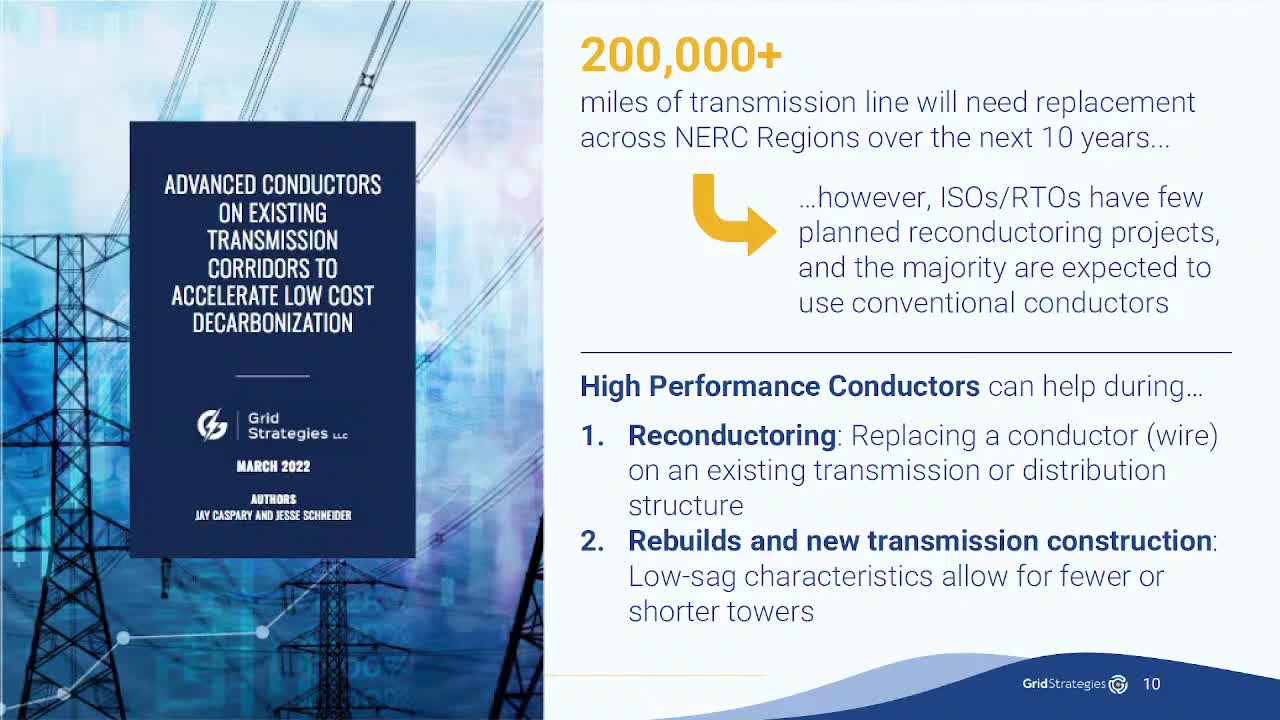Experts Propose New Strategies for Upgrading Aging Transmission Lines
July 16, 2025 | Utah Public Service Commission, Utah Subcommittees, Commissions and Task Forces, Utah Legislative Branch, Utah
This article was created by AI summarizing key points discussed. AI makes mistakes, so for full details and context, please refer to the video of the full meeting. Please report any errors so we can fix them. Report an error »

In a recent technical briefing held in Utah, discussions centered on the future of electrical transmission systems and the potential for significant upgrades to enhance capacity and efficiency. The meeting highlighted the pressing need for modernization in the face of increasing energy demands and the integration of renewable resources.
One of the key topics was the consideration of reconductoring existing systems versus rebuilding them with new transmission lines. Experts emphasized that utilizing shorter towers and fewer structures could offset the costs associated with advanced wiring technologies. The conversation pointed to the advantages of composite conductors over traditional steel core wires, which tend to sag under high temperatures, leading to increased energy losses.
The briefing also referenced a historical project in Kansas City, where live reconductoring was implemented. This project served as a research initiative to assess the capacity of transmission lines, revealing that significant power could be pushed through upgraded systems. The analysis presented indicated that if just one in four of the 200,000 miles of transmission lines needing upgrades were reconductored, it could add approximately 27 gigawatts of new capacity. This increase would facilitate the integration of various energy sources, including solar, wind, and gas plants, while also reducing energy losses.
The implications of these discussions are substantial. Reducing energy losses not only enhances efficiency but also translates to considerable savings on a national scale. The recommendations made during the briefing included calls for the integration of high-performance conductors in all planning processes, a move that has already been mandated by the Federal Energy Regulatory Commission (FERC).
As the meeting concluded, participants expressed optimism about the progress being made in the sector and the importance of regulatory bodies requiring utilities to conduct thorough analyses of their Integrated Resource Plans (IRPs). The ongoing evolution of transmission systems is poised to play a critical role in meeting future energy needs while supporting the transition to cleaner energy sources.
One of the key topics was the consideration of reconductoring existing systems versus rebuilding them with new transmission lines. Experts emphasized that utilizing shorter towers and fewer structures could offset the costs associated with advanced wiring technologies. The conversation pointed to the advantages of composite conductors over traditional steel core wires, which tend to sag under high temperatures, leading to increased energy losses.
The briefing also referenced a historical project in Kansas City, where live reconductoring was implemented. This project served as a research initiative to assess the capacity of transmission lines, revealing that significant power could be pushed through upgraded systems. The analysis presented indicated that if just one in four of the 200,000 miles of transmission lines needing upgrades were reconductored, it could add approximately 27 gigawatts of new capacity. This increase would facilitate the integration of various energy sources, including solar, wind, and gas plants, while also reducing energy losses.
The implications of these discussions are substantial. Reducing energy losses not only enhances efficiency but also translates to considerable savings on a national scale. The recommendations made during the briefing included calls for the integration of high-performance conductors in all planning processes, a move that has already been mandated by the Federal Energy Regulatory Commission (FERC).
As the meeting concluded, participants expressed optimism about the progress being made in the sector and the importance of regulatory bodies requiring utilities to conduct thorough analyses of their Integrated Resource Plans (IRPs). The ongoing evolution of transmission systems is poised to play a critical role in meeting future energy needs while supporting the transition to cleaner energy sources.
View full meeting
This article is based on a recent meeting—watch the full video and explore the complete transcript for deeper insights into the discussion.
View full meeting

